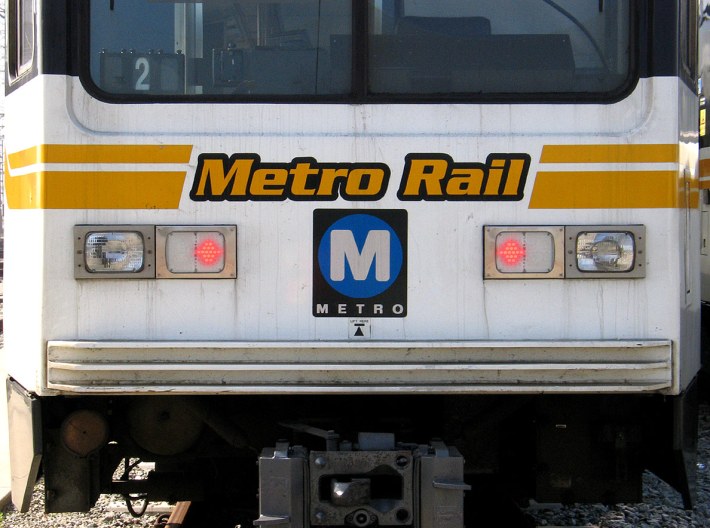"The deadliest light rail line in the country."
Metro's Blue Line, which runs from Metro Center through South L.A. and Watts into Long Beach, has been involved in more than its share of crashes, both minor and fatal, since it opened twenty-two years ago. Regardless of who is deemed "at fault" in the crash, it's doubtless that the Blue Line's at-grade routing is a major factor in the crashes. The grade-separated Gold Line and Green Line have been involved in zero fatal crashes in their histories.
In the midst of what might be the Blue Line's bloodiest year to-date, L.A. County Supervisor Zev Yaroslavsky wants answers. Yaroslavsky authored a motion directing staff to convene a Metro Blue Line Task Force to examine safety procedures and strategies for the Blue Line operation. The motion was amended by Supervisor Mark Ridley-Thomas to improve communication to the community and media when there is a crash.
This year, six people have died after being struck by a Blue Line train. Four of those deaths were suicides. Despite the difficulty in preventing a suicide at an at-grade light rail, this number was particularly concerning to Yaroslavsky who pressured staff to create some solutions to the "suicide problem." The previous "record" for Blue Line fatalities was in 1999, when 10 people died after crashes with Blue Line trains.
Many residents of South L.A., including some at the Board Meeting yesterday openly wonder if the location of the Blue Line, which runs through many lower income and African American communities, has something to do with the lack of progress impeding deaths.
"Can you imagine this level of carnage being permitted in South Pasadena instead of South Los Angeles," Damien Goodmon asked rhetorically when he spoke to Streetsblog and Intersections about the opening of the Expo Line.
This is hardly the first time that Metro has studied what causes so many Blue Line crashes. In fact, officials were perplexed by the deadly year in 1999 when it happened. Following a particularly nasty year in 1998, officials put in new procedures and infrastructure to make the line safer.
The Los Angeles Times reports on the changes put in place (in 1999):
* A public outreach campaign.
* The assignment of eight county sheriff's deputies to watch for motorists and pedestrians trying to pass lowered crossing gates. Fines were increased last year to $271.
* The installation of 10 cameras at 17 locations to photograph motorists who try to get around lowered gates. Authorities can use photographs of the license plates to issue citations. This year, the MTA plans to add six more cameras.
* State approval for new crossing gates that are more difficult for motorists to bypass. The gates--which use four arms instead of two--were tested at 124th Street in Willowbrook. The MTA plans to install the gates on 10 other rail crossings over the next five years.
This year, the total number of deaths is increased by the number of suicides, and 1999 also had a statistical quirk. Six of the ten reported deaths were caused in one crash, where an unlicensed driver tried to outrun a train and failed. In 1999, six of the ten deaths were caused by one unsafe driver. This year, four of the six deaths have been ruled suicides.
But blaming the fatality rate on the mistakes of the people killed is a non-starter. In 1999, the MTA expressed confusion over why so many people were making illegal left turns and driving into the path of the train.
"Why they are doing that, who knows?" said MTA spokesman Ed Scannell. The agency is launching a billboard campaign to warn motorists about the dangers of illegal left turns.
“I think there are two sides of the equation,” he said. “You have the agency responsible for building and operating the light rail lines and that has an obligation to incorporate safety measures and you have the public that has to obey the warning signs that we install. People have a responsibility to obey both the active and passive warning devices.
“We really need the public’s help in paying attention to them and not disobeying them for whatever reason.”







